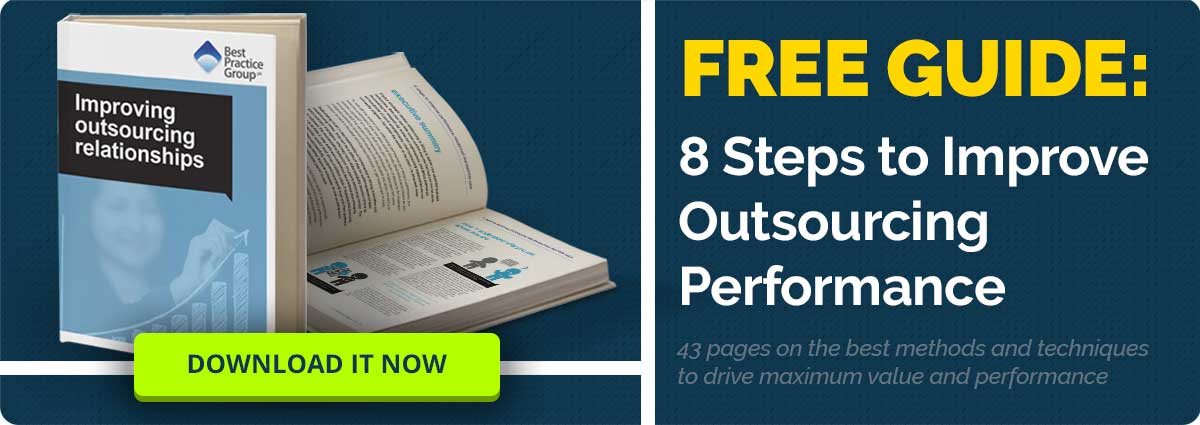 In a recent LinkedIn post, Joshua Reddaway, Director, Work and Pensions VFM and Head of Practice (Commercial and Contracting) at the UK National Audit Office (NAO) talked about the new NAO report they had released on the government’s handling of Carillion’s liquidation.
In a recent LinkedIn post, Joshua Reddaway, Director, Work and Pensions VFM and Head of Practice (Commercial and Contracting) at the UK National Audit Office (NAO) talked about the new NAO report they had released on the government’s handling of Carillion’s liquidation.
It “sets out the facts” relating to the government’s involvement in the handling of the Carillion situation, from its surprise profit warning in July 2017 to its liquidation. As this is a sequence of events we have followed with interest over the last year, it is only fitting that we should share with you what this latest NAO report has to say and the lessons it focuses on.
The facts and figures that make this story relevant
This sequence of events begins with the Carillion profit warnings announced in 2017. At that point, Carillion was one of only a handful of market-leading outsourcing companies. It employed around 45,000 staff, mainly in the UK, Canada and the Middle East and was running somewhere in the region of 420 public sector facilities management, catering, accommodation, consultancy and construction contracts for, among others, hospitals, schools, prisons and the armed forces.
As public sector contracts accounted for only 33% of Carillion’s total revenue there are clearly many other contracts that have been affected by the demise of this organisation.
When Carillion collapsed, reports suggested that over a billion pounds was owed to between 25,000 and 30,000 businesses, many of them too small or too reliant on this relationship to weather such a storm, implying that there would be quite a few more closures to come from them also.
What the NAO report Government’s handling of Carillion’s liquidation focused on:
The report “focuses on the role of the UK government in preparing for and managing the liquidation”, and its key findings are split into 14 points as listed below:
1. Carillion was a strategic supplier to government with around 420 contracts with the UK public sector. By value, Carillion was central government’s sixth largest supplier, and despite the dispute of new contracts being awarded to Carillion after its profit warning, its government revenue was in fact falling at that point.
2. The value of Carillion’s public sector contracts varied widely, from those that were highly profitable to those that incurred significant losses. Operating margins on their profitable projects were at 13 to 15%. Some were barely profitable with operating margins of 1% and others made losses of hundreds of millions of pounds. The variance here suggests that more needed to be done at the due diligence phase of their projects to ensure their bid was not only won, but worthwhile to their own company and value received for the client organisations as well.
3. Government monitored Carillion as part of its risk management system for strategic suppliers. From 2013 onwards, the Cabinet Office raised concerns with Carillion over its delayed payments to subcontractors and the short selling of its shares. From 2016 onwards, the company was only rated ‘amber’ due to “performance concerns on important central government contracts”. When Carillion announced its profit warning in July 2017, this rating was raised to ‘red’.
4. The scale of Carillion’s 10 July 2017 profit warning was a surprise to the government. With Carillion publishing its accounts showing a profitable 2016 just four months earlier, its profit warning and announcement of £845m provision for losses came as a complete surprise; a surprise that just got bigger when that figure grew to £1.05bn four months later.
5. The Cabinet Office raised its risk rating of Carillion to red in September 2017 but did not raise Carillion’s rating to its highest risk category before it collapsed. Not wishing to be surprised again, the Cabinet Office “took steps to improve its information about Carillion’s financial health, including regular access to some of Carillion’s internal financial information and it had regular contact with Carillion”. However, they did not raise their rating of the company to ‘high risk’.
6. Carillion announced £1.9 billion of new government work after the 10 July profit warning. In all, eight new public sector contracts and variations were agreed with Carillion after its July 2017 profit warning. Awarding these contracts to Carillion, given the public revelation of their financial status may sound strange, but according to the NAO report, the relevant clients didn’t believe “they had grounds for disqualifying the bids under procurement rules”.
7. The Cabinet Office’s coordination of contingency planning in case of Carillion’s failure, began in July 2017, gained momentum from October, and was complete for central government by mid-January 2018. Though the government got started on its contingency planning swiftly enough, it seems that some departments were not able to respond to this crisis, with 16 out of 26 not providing costed preferred options by the point of liquidation.
8. In early January, Carillion asked the government for £223 million to help it through to April 2018 and additional support with its financial restructuring. In December 2017, the banks Carillion owed money to say they would cut it off from short-term funding unless they asked for government help.
9. The Cabinet Office decided it was better that Carillion enter into a trading liquidation than to provide financial support. However, after an options appraisal, the Cabinet Office then decided to go another way. The trading liquidation sounded the death-knell for Carillion as it was a temporary solution until “other arrangements could be made” for the contracts it was working on.
10. The Cabinet Office made final preparations for the liquidation of Carillion before it told Carillion it would not provide support. This may sound controversial, but in reality it’s just good sense planning when so many businesses, individuals, and public bodies were going to be impacted by the decision.
11. Carillion staff continued to provide public services. However, with so many projects and subcontractors involved, good planning and procedures meant there was very little disruption to services post-announcement – Carillion staff turned up, joint partners took over and new contractors found in most cases.
12. The Official Receiver currently expects all customers to have ended their Carillion contracts or transferred them to new suppliers by the end of June 2018. This deadline has now passed, so it will be interesting to see whether the NAO picks up on the ‘post-events’ and to what degree service impact has been minimised and whether there are further lessons to be learned from the post-transition process.
13. The Cabinet Office will ultimately pay the loss on the liquidation, currently estimated at £148 million. Though not an insubstantial amount, this is at least less than the £314–374m estimated by the Cabinet Office before liquidation and is offset against the £150m already allocated by the Cabinet Office to cover the cost of liquidation.
14. Former Carillion workers, investors and other creditors will also bear losses. So far 64% of the company’s workforce have found alternative employment, 13% were made redundant and the remaining 23% are still employed by other divisions of Carillion. The company’s non-government creditors are unlikely to see their money back, but some in the supply chain will still have their invoices paid if these are for any of the 167 of Carillion’s companies that are not in liquidation.
Do you need to move providers in the medium to long term?
If your organisation or department has been caught up in the issues surrounding the collapse of Carillion, or if you are concerned that your outsourced suppliers may hit troubled times, consider these fundamental good practice steps to finding the right kind of new provider.
1. Build your case
A business case must be clear, agreed, accurate as possible and understood by all. This can only happen where internal stakeholders are involved and their views incorporated into the decision-making process and where the outcomes a project is designed to achieve are adequately identified and documented.
2. Responsibilities and requirements
The roles and responsibilities of everyone in the process must be identified and clarified, both internal and external individuals and teams, and both they and the outcomes the business case presents, must be qualified as understood by all concerned.
3. What goes in will determine what comes out
Decisions on contractual headline elements and supplier assessments for suitability are key to your success on a project. KPIs should be reverse engineered from the outcomes identified in your business case. A clear, consistent, documented and justifiable, assessment scoring criteria is needed to both choose the right supplier, get you to the right service outcomes, and defend your decision against the potential of later disputes.
4. Early market testing
A sanity check is always a good thing; ask those in the market with sufficient practical knowledge to determine whether the plans you have developed so far are complete, clear and executable – are they fit for purpose?
5. Procurement and supplier side due diligence
Thanks to the thoroughly researched business case, buy-in from all stakeholders and the development of a clear and complete presentation of outcomes and expectations from the project the procurement process should be far more targeted. But it is also vital to ensure that suppliers themselves validate that the solutions they propose will achieve the outcomes stated.
6. Contracts for the real world – reverse engineering
Contracts should be reverse engineered from the business outcomes you wish to achieve from the implementation of the services. The contract should also be clear, detailed and understood. Conversely, assumptions, ambiguities and lengthy, jargon-filled documents will increase the risks of poor client and supplier behaviour during service implementation and ongoing operation.
It is important to make sure that any contract you develop with your supplier is suited to the real world, because change does happens and your contract should have the flexibility to bend when needed to and react when broken. Build in a biannual review (reshaping process) and refinement commitment so you can adapt your contract to the changes that you must expect will occur throughout its life cycle.
7. Client and supplier management
Having the right people in the right roles, encouraging the right behaviours, and being ready to both encourage and hold accountable should the need arise, are important to the future success of any complex service delivery process. A multidisciplinary team designed to work with the supplier and having the ear of management on client-side is vital, as communication, insight and action are all elements of good management and relationship building.
Carillion’s Liquidation – Conclusion
The NAO largely seem to look positively on the actions that the Cabinet Office took throughout the Carillion collapse and liquidation. There are clearly things that could have been done better, not least the ongoing planning that it would have been helpful to already have had in place from the various government departments so that if material risks had manifested themselves, they could have been acted upon more swiftly.
As it was, pressure could have been exerted to get all public sector clients to get involved in the contingency planning more swiftly and the issue of millions of pounds of contracts being allocated after Carillion had made its profit announcement. However, there are a lot of positive things to say as well, such as the speed with which the government initiated said contingency planning, and the efficiency with which contracts were transferred or reassigned to minimise disruption to end users.
In Joshua Reddaway’s LinkedIn post, which inspired this article, he states that this NAO report “sets out the facts, but PAC will be asking some well needed questions. There is certainly a lot to learn”, so we will have to wait and see what new insights come out. Well done Joshua.
Photo credit: iStock


